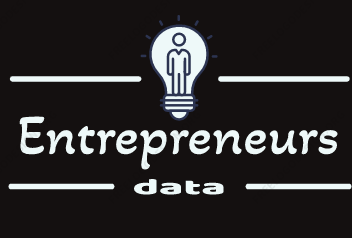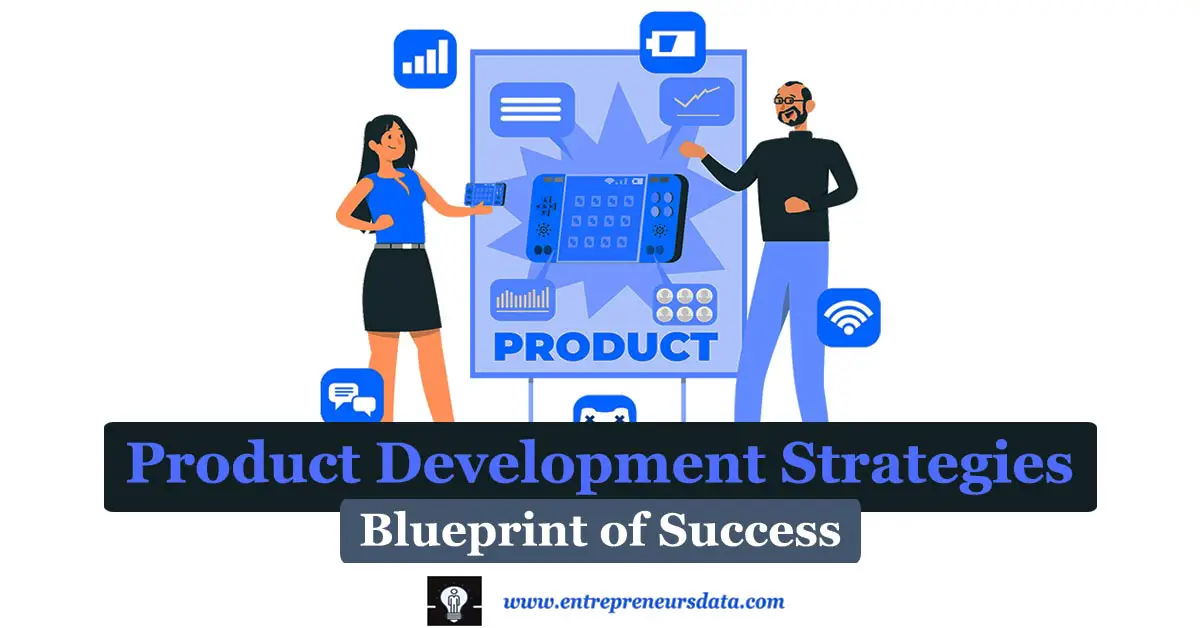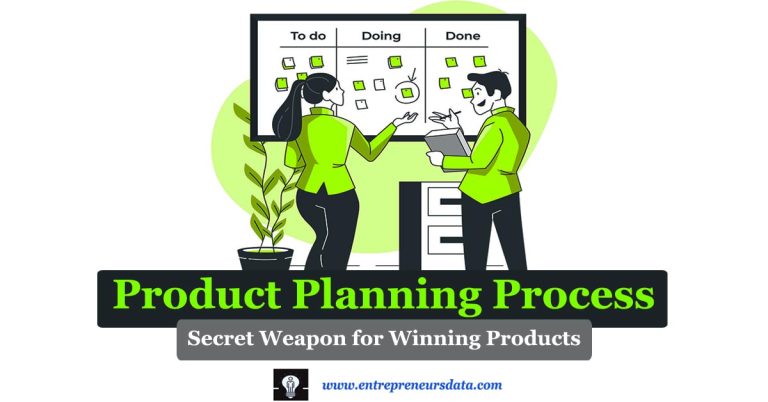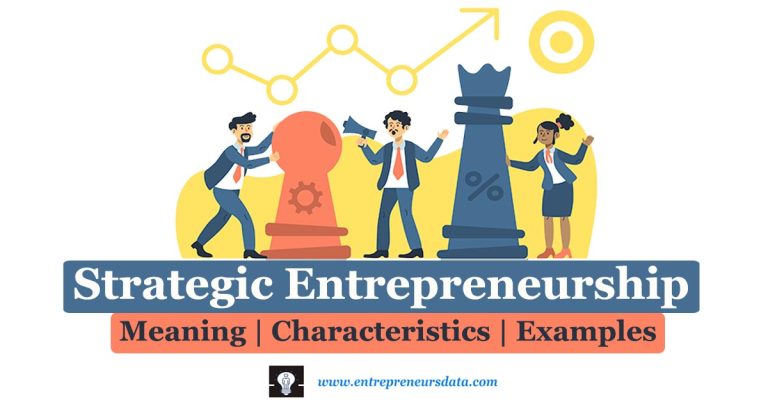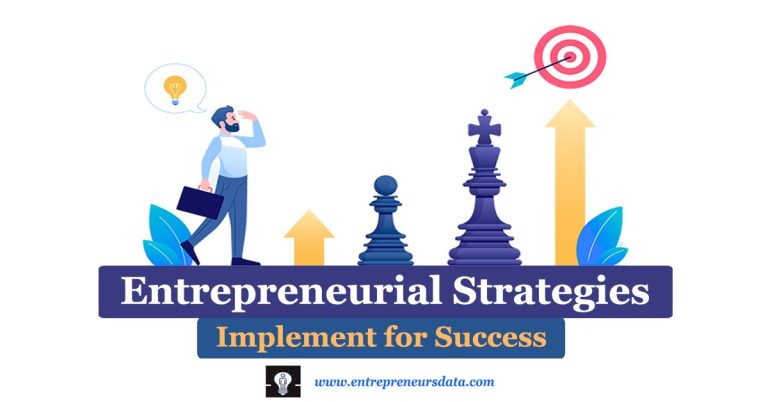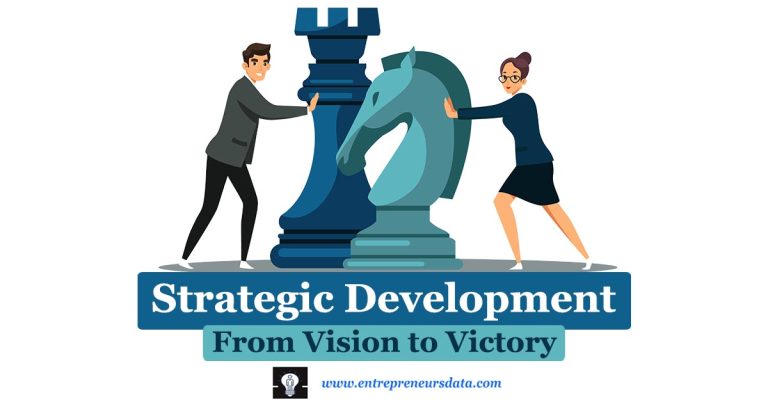13 Product Development Strategies: Blueprint of Success – “The best product ideas come from solving problems.” – Jeff Bezos. These words encapsulate the essence of entrepreneurship, where innovation arises from addressing needs and overcoming challenges. In the realm of business creation, navigating the path from concept to market requires a well-crafted guide. This “Product Development Strategies: Blueprint of Success” will guide you to that.
This article unveils the intricacies of product development. From understanding the core concept to unravelling the types, stages, and critical art of choosing the right strategy. This exploration is designed to empower entrepreneurs with the insights needed to turn their vision into reality.
What Is Product Development Strategies?
A product development strategy is a high-level plan. It describes the procedures a business will follow to launch a new product or enhance an already-existing one. The company’s overarching commercial objectives, consumer input, and market research should all form the foundation of the strategy. It is a necessary tool for any business. particularly those who wish to develop competitive products.
The company’s business goals are the guiding stars, ensuring every move aligns with the broader mission. Think of it as a chef concocting a culinary masterpiece with just the right ingredients. Take Apple, for instance. Each new iPhone is a testament to listening to users and innovating accordingly. Therefore, having a solid strategy is essential for entrepreneurs. Especially navigating the risky waters of product creation as it ensures a successful and safe journey.
Read – Entrepreneurial Strategies
Main Purpose of New Product Development Strategy
In the world of entrepreneurship, the New Product Development (NPD) strategy is like the captain’s map, guiding companies through uncharted waters of innovation. Its main purpose is to navigate the creation and launch of new products, acting as a visionary roadmap from the spark of an idea to the triumphant market debut and beyond. Here’s why it’s the entrepreneur’s secret weapon:
An effective NPD strategy aligns product development with business goals, setting clear objectives and targets for each new product. It helps identify market opportunities through thorough market research, optimizing resource allocation, reducing time and costs, and embracing market changes.
NPD strategies are financial wizards, ensuring efficient resource allocation throughout the development journey. They also help entrepreneurs stay relevant and ahead of the curve by embracing changes in market conditions, technologies, and customer preferences.
Read – What is Modern Business
Importance of Product Development Strategies
The importance of product development strategies cannot be overstated. Imagine these strategies as the guiding stars for businesses of all sizes. It provides a roadmap that leads to the creation of new and innovative products. Let’s dive into why these strategies are absolute game-changers for entrepreneurs.
Alignment with Business Goals
Product development strategies are the compass that ensures your product development efforts are in sync with your overall business goals. It’s about making sure every new product you introduce contributes to the grand plan, driving your company towards success.
Market-Driven Innovation
Think of product development strategies as the detective work that delves deep into market dynamics. By conducting thorough market research, these strategies uncover what your customers want, spot emerging trends, and identify your competition. The result? Products that not only meet but exceed customer expectations, standing out in a crowded market.
Efficient Resource Allocation
Product development strategies are the financial wizards, ensuring every penny and every person in your team is working towards maximum impact. From the initial idea to the post-launch phase, these strategies optimize your resources, making sure you get the most bang for your buck.
Read – Green Innovations
Reduced Development Time and Costs
Picture product development strategies as efficiency experts. They facilitate the development process. Also, cutting down the time and expenses associated with carrying a novel product to market. This isn’t just about saving money. It’s about improving your overall profitability.
Adaptability to Market Changes
In the ever-evolving marketplace, product development strategies are your chameleons. They embrace change, whether it’s in market conditions, technologies, or customer preferences. This flexibility ensures that your company remains competitive, delivering products that always meet the demands of the market.
Customer Satisfaction and Loyalty
Successful product development strategies lead to products that go beyond customer expectations. It’s about creating not just buyers but loyal fans. Satisfied customers are more likely to make repeat purchases, spread positive word-of-mouth, and become advocates for your brand.
Sustainable Growth and Profitability
Here’s the bottom line – consistent success in introducing new products equals a steady stream of revenue and sustainable growth. Product development strategies are the architects of this success, ensuring your business not only survives but thrives in the long run.
Read – Sustainable Entrepreneurship
Types of Product Development Strategies With Examples
Companies deploy various strategies to navigate the competitive landscape and introduce new offerings. Here’s a glimpse into some of the most common types.
1. Market Leader Strategy
Overview: Maintaining a dominant position in the market through continuous innovation and product improvement.
Example: Think of tech giants that consistently release upgraded versions of their flagship products, staying ahead of the curve.
2. Market Challenger Strategy
Overview: Companies striving to gain market share by offering lower prices, enhanced features, or targeted marketing compared to the leader.
Example: A new smartphone brand challenging established ones by offering advanced features at competitive prices.
3. Niche Player Strategy
Overview: Focusing on a specific market segment or product category, tailoring products to the unique needs of that market.
Example: Specialized skincare brands targeting a particular skin concern, avoiding direct competition with broader beauty brands.
4. Early Adopter Strategy
Overview: Being among the first to introduce a new product or technology, leveraging the advantages of being an early entrant.
Example: Companies releasing the latest gadgets, capitalizing on consumers eager to embrace cutting-edge technology.
Read – Role of Entrepreneurship
5. Late Adopter Strategy
Overview: Waiting for a new product or technology to mature before entering the market, balancing reduced risk with potential missed advantages.
Example: Companies entering the electric car market after the technology has become more established, minimizing initial risks.
6. New Product Development
Overview: Creating a brand-new product from scratch, is often a bold move into uncharted territory.
Example: Apple’s launch of the first iPhone, revolutionizing the smartphone industry.
7. Product Improvement
Overview: Enhancing an existing product through additional features, bug fixes, or performance upgrades.
Example: Software companies regularly release updates to improve user experience and address issues.
8. Product Line Extension
Overview: Expanding an existing product line by introducing new products within the same category.
Example: A snack brand introducing new flavours or variations of its popular product.
Read – Strategic Development
9. Product Diversification
Overview: Developing new products unrelated to the company’s existing offerings, and entering diverse markets.
Example: A clothing brand expanding into the home goods market.
10. Product Repositioning
Overview: Changing the way a product is perceived in the market to reach a different audience or address a new need.
Example: A traditional watch brand repositioning itself as a tech-savvy smartwatch provider.
11. Technology-driven strategy
Overview: This strategy is all about riding the tech wave. It involves embracing new technologies to craft innovative products or services. Picture a smartphone company constantly incorporating cutting-edge features to stay ahead in the market.
12. Customer-centric strategy
Overview: Placing the customer in the driver’s seat, this strategy involves involving them at every stage. From idea conception to testing and eventual launch, the customer’s needs and preferences take centre stage. Think of an online platform constantly refining its features based on user feedback.
13. Product-led growth strategy
Overview: Let the product do the talking. This strategy revolves around creating a product so valuable that it becomes a customer magnet. Whether users are willing to pay for it or become avid advocates, the product becomes the engine of growth. Imagine a project management tool becoming indispensable for teams, leading to organic user recommendations.
Stages / Steps of Product Development Strategies with examples
Product development is like orchestrating a symphony. Just like any masterpiece, it involves distinct stages. Let’s take a stroll through the key stages of product development strategies, unravelling the complexities with relatable examples.
1. Idea Generation and Screening
In this inception phase, companies brainstorm and sift through a myriad of ideas, searching for the gems that align with their strategy and cater to market needs. Think of a food company spotting a craving for healthy snacks, brainstorming ideas, and evaluating them based on nutritional value and taste.
2. Concept Development and Testing
Promising ideas take shape in this stage, evolving into detailed concepts. Prototypes are born, and potential customers become the critics. Picture our food company crafting prototypes of a new snack, conducting taste tests, and tweaking the recipe based on customer feedback.
Read – Technology in Entrepreneurship
3. Business Analysis and Planning
Armed with a refined concept, companies delve into the nitty-gritty of business analysis. They scrutinize the financial landscape, market potential, and competition. Our food company conducts market research, assessing rivals and formulating detailed financial plans for production and marketing.
4. Product Development and Testing
The rubber meets the road as the actual development kicks off. Technical specifications, engineering designs, and rigorous testing ensure the product meets quality standards. Picture the food company collaborating with experts to finalize the formulation, conducting tests for shelf life and taste consistency.
5. Launch and Commercialization
The product takes its bow onto the grand stage of the market. A comprehensive marketing extravaganza ensues, building brand awareness and enticing customers. Our food company launches a multi-channel campaign, flooding social media, gracing in-store displays, and partnering with influencers.
6. Post-Launch Monitoring and Evaluation
The spotlight doesn’t dim after the launch; it intensifies. Companies monitor the product’s performance, gathering feedback, and identifying areas for improvement. Our food company keeps a keen eye on sales, customer reviews, and social media chatter, making adjustments to ensure the snack’s continued success.
Read – Entrepreneurship in Greece
How to Choose the Right Product Development Strategies (Tips)
Choosing the right product development strategy is like plotting a course for success in the entrepreneurial seas. Here are some practical tips to navigate this crucial decision-making process.
Define Your Goals and Objectives
Clarify your product’s mission. Are you aiming for market dominance, revenue generation, or problem-solving for your customers? Clearly defined goals act as your North Star, guiding you towards a strategy aligned with your business objectives.
Understand Your Target Audience
Know your audience inside out. Who are you building this product for? What are their needs and pain points? Understanding your audience ensures that your product resonates with them, making it a solution they can’t resist.
Evaluate Your Resources
Take stock of your resources – financial, manpower, technology, and expertise. Your resources shape the scope of your product and influence the development process. This evaluation sets the boundaries for what is achievable.
Consider Your Market:
Survey the landscape. What’s the competition like? What are the trends and challenges in your industry? Understanding your market helps you spot opportunities and steer clear of potential pitfalls, keeping you ahead in the game.
Choose a Development Methodology
Select a development methodology that fits your project. Whether it’s the structured waterfall, the agile approach, or the nimble lean startup model, each has its strengths. Pick the one that aligns best with your vision and project requirements.
Be Willing to Adapt
Flexibility is key. The product development journey isn’t always a straight line. Be open to making changes based on new information or feedback. A successful strategy can pivot and adjust when needed.
Measure and Track Your Progress
Keep your finger on the pulse. Regularly measure and track your progress. This ensures that you’re moving in the right direction, allowing you to identify areas for improvement and confirming that you’re on track to achieve your goals.
Conclusion
“Having a product that people want is the most crucial thing” – Sam Altman. As we navigate through the intricate world of product development strategies, these words echo as a timeless truth. Our journey has unfolded the fundamental aspects. Including understanding what product development strategies entail, recognizing their primary purpose in bringing valuable solutions to the market, and appreciating their paramount importance in the entrepreneurial landscape.
We’ve explored the diverse types of strategies, delved into the crucial stages that transform ideas into market-ready products, and equipped ourselves with practical tips on choosing the right path. Just like a well-crafted blueprint guides the construction of a sturdy building, these strategies serve as the architectural design for entrepreneurial success. As we conclude our exploration, remember, that the true measure of triumph lies in creating something that resonates with the wants and needs of the people. So, fellow entrepreneurs, armed with the insights from this journey, go forth and let your product be the answer to what people truly desire.
FAQ’s on Product Development Strategies
What are the 4 product development strategies?
The four main product development strategies are;
Market-driven strategy: concentrates on finding and meeting unmet market needs. Creating a fitness app that suits the exercise inclinations of a certain target market is one example.
Technology-driven strategy: makes use of emerging technologies to produce cutting-edge goods and services. Introducing an advanced smartphone with distinctive features is one example.
Product-led growth strategy: emphasises the use of the product itself to draw in and keep consumers. Giving a free version of the software with upgraded features to subscribers who pay for it is an example.
Customer-centric strategy: centres the product development process around the needs of the client. For instance, modifying a product in response to user input directly.
What is product strategy development?
The process of establishing a product’s vision, mission, and goals, as well as the plans for reaching them, is known as product strategy development. It ensures alignment among stakeholders on the product’s purpose and direction. For instance, when creating new software, the strategy may involve defining its core features, target market, and the value it brings to users.
What are the three strategic elements of product development?
The three strategic elements of product development are:
Customer understanding: Recognizing target customers’ needs, wants, and pain points to create a product they value.
Market analysis: Understanding the competitive landscape to position the product effectively and differentiate it from rivals.
Product definition: Clearly defining the features, functionalities, and value proposition of the product.
4. What are product development strategy examples?
Examples of product development strategies include:
Nike’s “Just Do It” campaign: A market-driven strategy tapping into consumers’ desire for fitness goals.
Apple’s iPhone: A technology-driven strategy, pioneering the combination of a touchscreen and a powerful processor.
Dropbox’s freemium pricing model: A product-led growth strategy, allowing users to try the product for free before upgrading.
Lego’s Mindstorms robotics kit: A customer-centric strategy, enabling children to design and build their robots.
5. What are the seven stages of a product development strategy?
The seven stages of a product development strategy are:
- Ideation: Generating and evaluating new product ideas.
- Concept development: Refining the product concept and creating a detailed development plan.
- Business analysis: Evaluating financial viability and determining the target market.
- Design: Developing the product’s design, features, and user interface.
- Development: Building and testing the product to meet requirements.
- Launch: Introducing the product to the market.
- Post-launch: Monitoring performance and making adjustments as needed.
